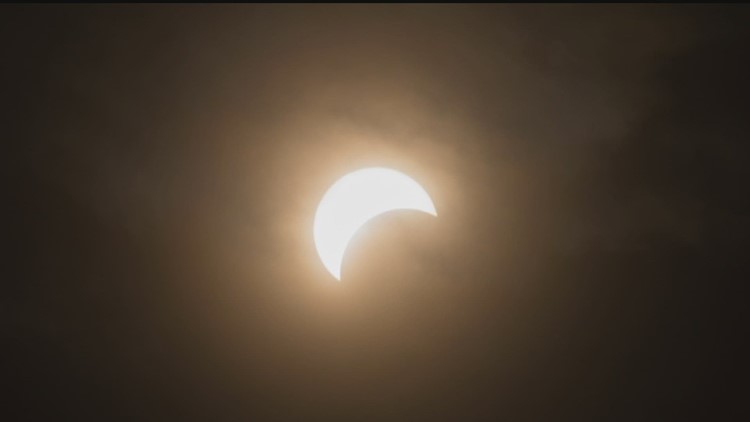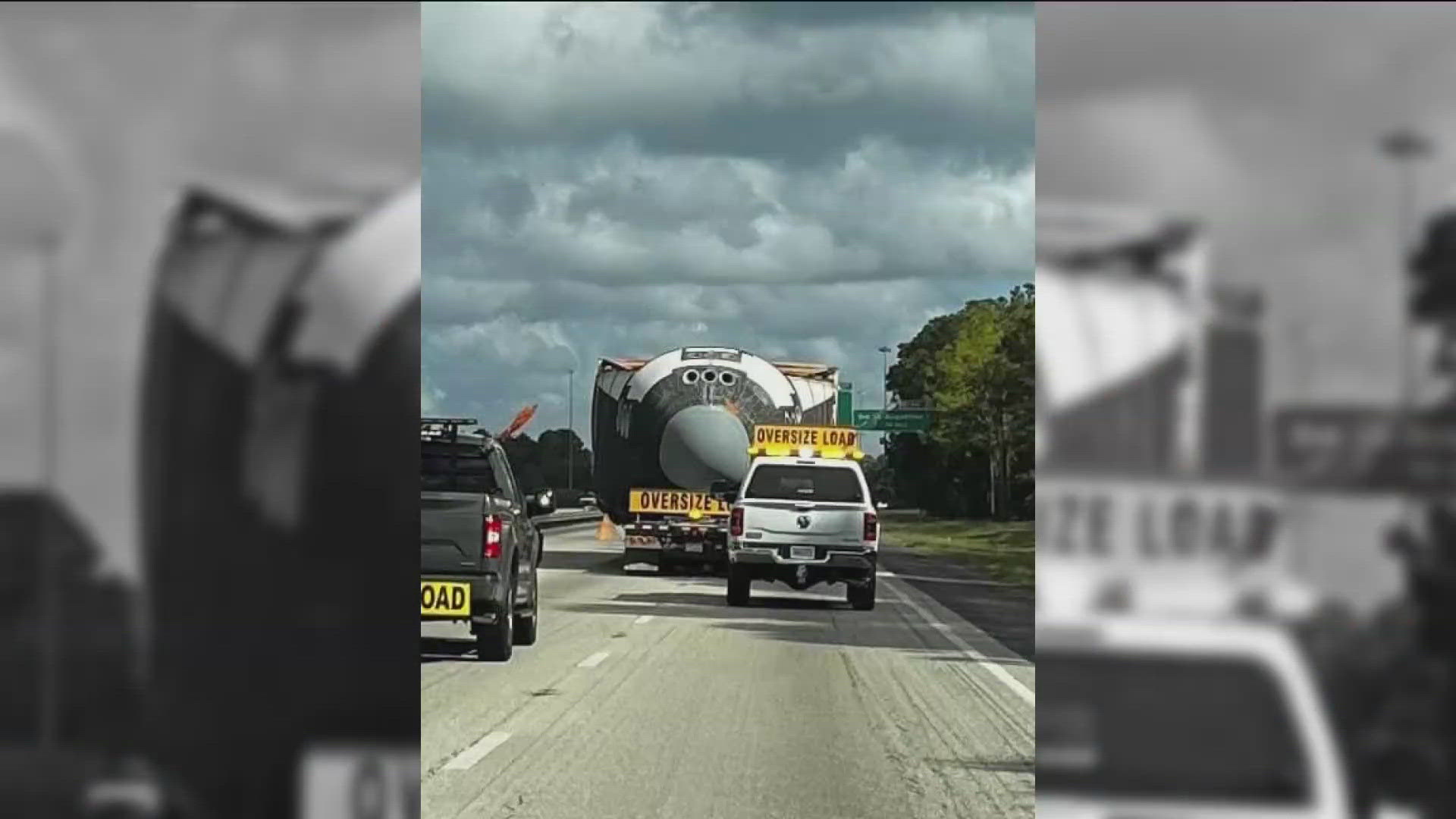MINNEAPOLIS — Better start digging for those 2017 eclipse glasses, Minnesotans — you're gonna need 'em.
Stand outside and look up (WITH THOSE SPECIAL GLASSES!) around 2 p.m. on April 8, and you'll have the pleasure of watching the moon's shadow partially envelop the sun.
Even though Minnesota isn't on the path of totality, a partial solar eclipse is still a sight to be seen. Here's what you need to know to make the most of your astral viewing experience.
Will it be too cloudy to see anything in Minnesota?
The forecast calls for clouds and showers Monday afternoon, which will significantly impact viewing the solar eclipse in the Twin Cities.
But experts say to not lose hope that you might see it.
"The clouds don't completely cover the sun, we can still see the partial eclipse through your eclipse glasses," said Sally Brummel, planetarium manager of the Bell Museum. "If there's not thick cloud cover, it's still worth trying to see it even if clouds are in the sky, only if you have eclipse glasses."
Where is the path of totality?
Looking back on 2017's spectacle, NASA said 2024's will be even more impressive.
According to the agency, an estimated 31.6 million Americans — 44 million in all — live in the path of totality this time, up from 12 million in 2017. That's because this year's path includes more populated areas, beginning over Mexico's Pacific Coast and ending over eastern Canada into the Atlantic. NASA said the path of totality from Mazatlán to Newfoundland encompasses an area about 115 miles wide. Other major cities in the path of totality include:
- Dallas, Texas
- Little Rock, Arkansas
- Jackson, Missouri
- Indianapolis, Indiana
- Erie, Pennsylvania
- Niagara Falls
- Buffalo, New York
- Montreal
This eclipse will also last longer than 2017's, which spanned 2 minutes and 42 seconds. This year, the eclipse's run time is expected to nearly double that, lasting about 4 minutes and 28 seconds.
But wait; there's more!
The stars really did align this go around, as astronomers said the moon will be at its closest approach to Earth for the month of April on the 7th. The moon's close proximity to Earth — about 223,000 miles — means it will appear slightly bigger in the sky, and is credited for that prolonged period of darkness.
When to watch it
In the Twin Cities, scientists expect the partial eclipse to begin at 12:50 p.m. and peak around 2:02 p.m. Times vary slightly in different parts of the state, which is why Eclipse2024.org mapped out a simulator for viewers who want their city's hard in and out times.
For North America's first lucky viewers, totality is expected to peak first on Mexico's Pacific Coast at around 11:07 a.m. PDT (1 p.m. CDT), making its way across the continental U.S. and exiting through the Atlantic coast of Newfoundland, Canada at 5:16 p.m. NDT (2:46 p.m. CDT).
Why bother?
You don't have to be an astronomy buff to appreciate a total, or partial, solar eclipse. As the process begins, some will remember the darkening sky and cooling temperatures. As darkness falls, viewers will be able to see the sun's corona — or its outer atmosphere — which is usually covered by the blinding face of the sun.
But besides the fact that you'll witness a truly amazing natural phenomenon, an event like a total solar eclipse also has the capacity to bring people together from all over the world, creating somewhat of a cultural phenomenon.
Because full solar eclipses often occur in uninhabited places like the South Pacific or Antarctic, experts said the next total eclipse over North America won't happen again until 2033 — over Alaska. That means it won't be until 2044 that totality will once again swallow the light on a path through the continental United States of Montana and North Dakota, as well as Western Canada.
NASA said the next full eclipse — spanning the entire country from northern California to Cape Canaveral, Florida — won't occur until 2045.
WATCH MORE ON KARE 11+
Download the free KARE 11+ app for Roku, Fire TV, Apple TV and other smart TV platforms to watch more from KARE 11 anytime! The KARE 11+ app includes live streams of all of KARE 11's newscasts. You'll also find on-demand replays of newscasts; the latest from KARE 11 Investigates, Breaking the News and the Land of 10,000 Stories; exclusive programs like Verify and HeartThreads; and Minnesota sports talk from our partners at Locked On Minnesota.
- Add KARE 11+ on Roku here or by searching for KARE 11 in the Roku Channel Store.
- Add KARE 11+ on Fire TV here or by searching for KARE 11 in the Amazon App Store.
- Learn more about the KARE 11+ app for Apple TV in the Apple App Store.
- Learn more about KARE 11+ here.
Watch more local news:
Watch the latest local news from the Twin Cities and across Minnesota in our YouTube playlist:



